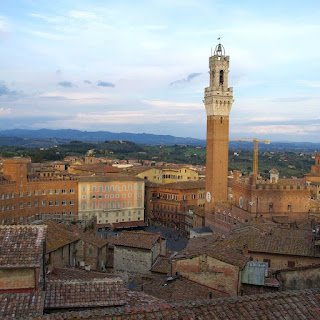The girdle is a cincture used to tie around a tunic or robe at the waist. It wasn't worn by Thomas; it is called by his name because it was a gift to him. Thomas is also known for his mission to India, during which he missed another important event from the Bible: the Assumption of Mary.
The Assumption of Mary is when she was taken bodily to Heaven because of her innate holiness. I've covered the Assumption and Thomas' absence here. Because Thomas was not present when Mary died/disappeared, his skeptical nature was countered by Mary appearing to him in a vision and dropping her girdle to him as evidence. Another version has him miraculously transported from India to the Mount of Olives to be present for the actual Assumption, and she drops her girdle to him in front of everyone.
The Girdle is supposed to be beneficial for pregnant women. It is reputed to have other protective powers. In 1402, the Duke of Milan, Gian Galeazzo Visconti, invaded Florentine territory. The girdle was carried around Prato as protection, and given credit for Visconti not attacking the city.
The image of Mary rising above the apostles—or Mary above Thomas alone—and dropping her girdle became a popular Italian art subject. But the story itself inspired other examples of Mary's girdle, and tomorrow we will look into just how many belts she carried and dropped to Thomas, so that they could be in different locations in the Modern Era. See you then.



